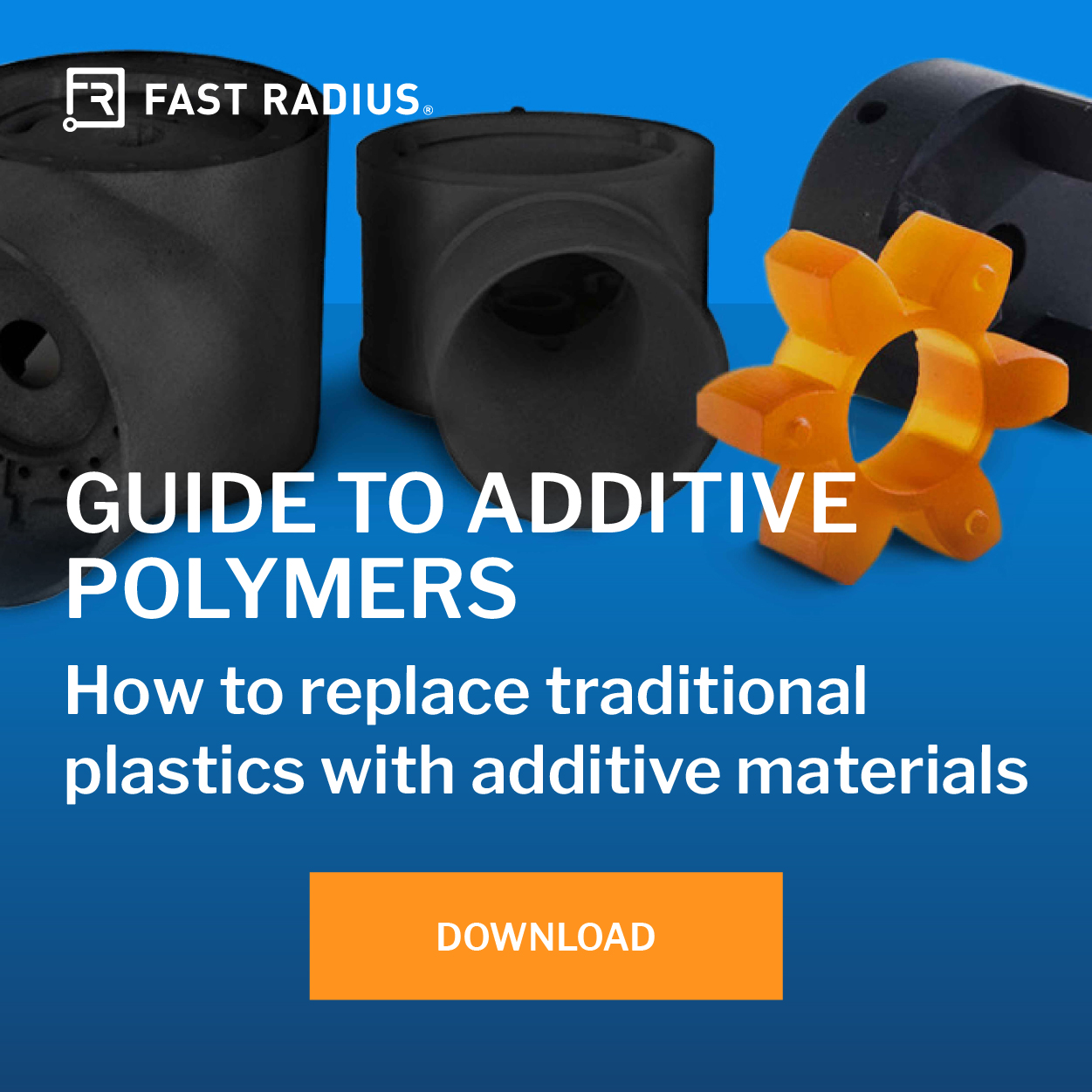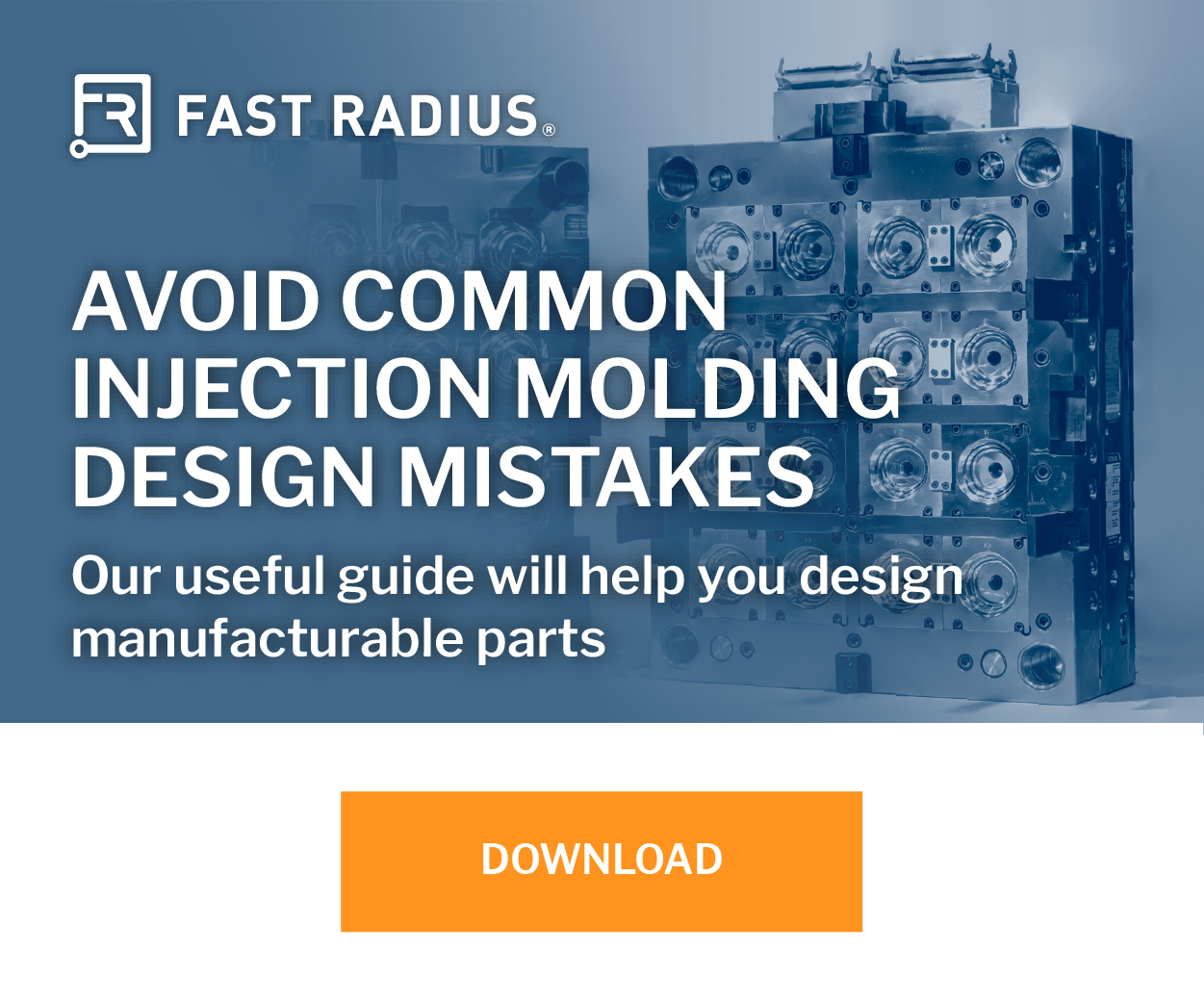Busting Myths: How Additive Polymers Affect Builds
Sponsored ContentWith advances in additive polymers, it may be time to consider moving a traditionally manufactured part to 3D printing.
Share
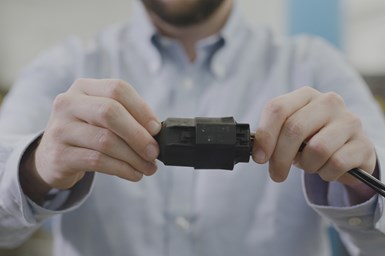
Fast Radius produced this part for Ford trucks using EPX 82. It is effective at this application thanks to the high strength-to-weight ratio and high max use temperature.
With additive manufacturing (AM) becoming more prevalent in manufacturing, even in high-production environments, many traditional manufacturers are considering turning toward it for certain applications. However, leaping into an entirely new field of manufacturing can be daunting, and it helps to have guidance from people with experience.
“A lot of myths have cropped up around AM,” says John Nanry, Co-Founder and Chief Fulfillment Officer at Fast Radius. “Some ideas that were accurate ten years ago are completely off base now.” Deciding if AM is right for your application means busting these myths and basing your decision on the current state of AM.
Are Additive Materials Reliable?

This chart shows the mechanical properties of three common additive materials and lists the legacy materials they might replace.
In the world of manufacturing, a part is only as good as the material it is made of, and the perception of AM parts as weak or porous often leads manufacturers to see it as a hobbyist pursuit. While this perception was well-founded in the early days of AM, the process is no longer relegated to prototyping. Many modern additive materials have isotropic or near-isotropic mechanical properties, making them similar in structure to injection-molded plastics.
Today, many AM materials can compete directly with traditional polymers. For example, CE 221 can replace many brittle materials including epoxies and composites. For ductile materials, RPU 70 can compete with polyurethanes and polycarbonates, and EPU 40/41 can compete with hyperelastics like rubbers and elastomers. Often enough, AM materials can outperform legacy ones.

An elastomeric lattice structure 3D printed with EPU 41. This design can compete with hyperelastics like rubbers and elastomers.
Even older AM plastics have found success in full-scale production. In aerospace, for example, the properties of the polyetherimide ULTEM has earned it FAA certifications for non-critical components. The material is commonly used in Fused Deposition Modeling (FDM), and its strength-to-weight ratio resembles that of some aluminum alloys, which makes it ideal for replacing certain heavier metals and weaker plastics.
Of course, the properties of an AM part depend not just on materials, but also on technology. “While it is true that early layer-by-layer 3D printing technology often produced parts that lacked consistent directional density,” Nanry says, “newer methods like vat polymerization and powder bed fusion (PBF) produce much denser and more uniform parts.” Modern technologies have reduced – and in some cases even eliminated – the issues that led to failures in the past, improving the consistency and reliability of AM parts.
With AM capable of replacing so many traditional materials, the question many ask is simple: could this part be made additively?
Can You Print This Part?
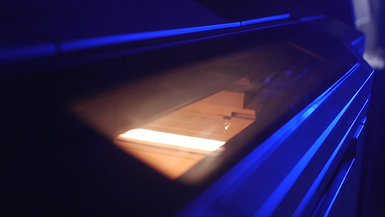
Here we can see the HP Multi Jet Fusion 3D printer mid-build.
Many parts have exacting specifications to meet the unique needs of the end product. However, AM materials have found use in every industry from medical to aerospace to consumer products. “There are many additive materials that perform as well as – or better than – traditional plastics,” Nanry says. “Whether you need something to withstand harsh environments or you simply need something with high durability, AM can cover your needs.” For example, materials like Epoxy 82 (EPX 82) are often used in agriculture and construction thanks to the high strength-to-weight ratio and high max use temperature. On the other hand, Rigid Polyurethane 70 (RPU 70) is often used for housings thanks to its durability and flexibility.
Additive can also create opportunities for new part designs. For example, AM can be used to consolidate parts, eliminating the need for costly, complex assemblies. In some cases, part consolidation can eliminate the need to manufacture separate hinges, gaskets, or threaded connectors, which usually improves the quality of the part. Additionally, AM makes complex lattices possible, enabling users to reduce the weight of the part without affecting its strength.
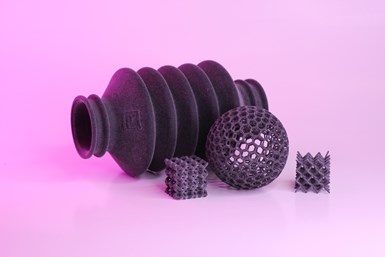
Fast Radius made these parts using HP High Reusability TPA.
Vitally, more materials are constantly in development. For example, HP 3D High Reusability TPA is a light, flexible material with enhanced rebound resilience. It is also extremely resistant to becoming brittle in cold weather, maintaining elastomeric properties well below freezing. Combined, these properties make it ideal for applications such as cold-weather sports, airless tires and automotive components. Keeping astride of developments like this can be very profitable, as you might find a material that meets your application requirements. Even better, a new material might inspire you to tackle a part in an entirely new way.
However, the usability of materials is only one concern. Another is cost.
Do Additive Materials Cost Too Much?
Cost has always been a major factor when weighing out viability for production, and in AM this is no different. While newer materials often have the tendency to cost more than those made through traditional manufacturing techniques, advances in technology can quickly drive down the price. Many additive materials have reached the point where they are cost-effective, even in high production lines.
Even with falling prices, the unit costs of AM materials can be quite high, and it is understandable if this deters some manufacturers. However, the material is not the only cost to making a part. “It’s important to evaluate the complete cost structure for an additively manufactured part,” Nanry says. “Calculating the total landed cost – including factors like tooling, machining, and warehousing – shows that additive can be significantly less expensive than CNC machining or injection molding in some cases.”
With both the materials and the technology in a constant state of flux, it can be daunting to outsiders. “It helps to keep abreast of new developments, or to work with people who do,” says Nanry. “That is why Fast Radius offers consulting to traditional manufacturers getting set up in an AM space.” Fast Radius is highly experienced in the AM world, and their engineers can help you to evaluate your needs and decide if AM is the right approach for your parts.
To learn more about how AM polymers compare to traditional materials, download The Fast Radius Guide to Additive Polymers or contact Fast Radius here.
